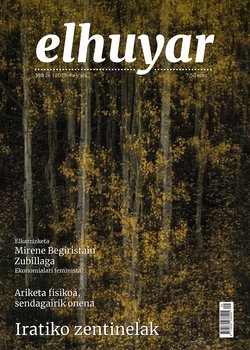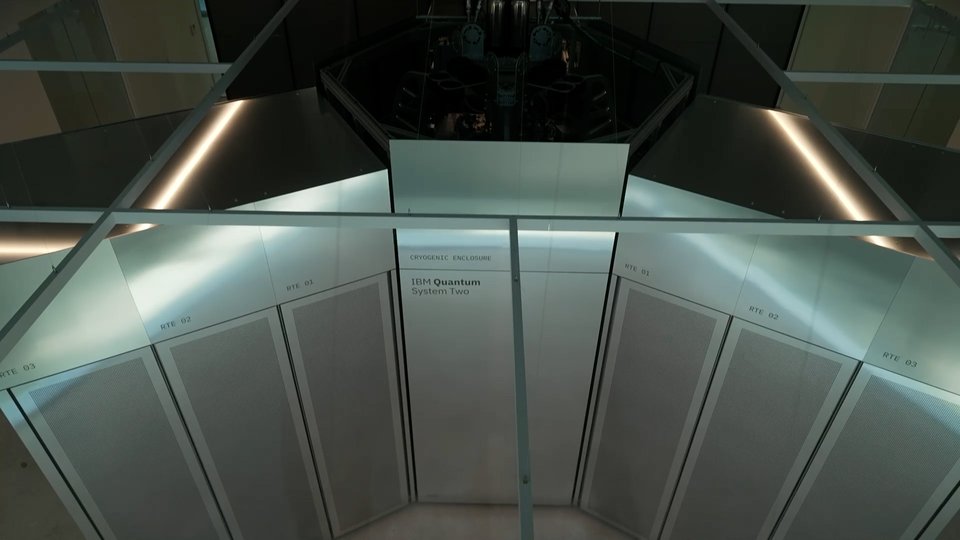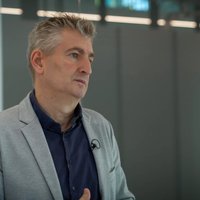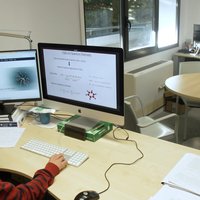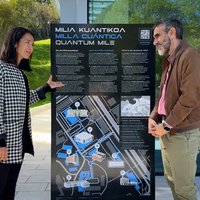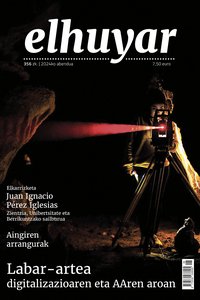Wood for river research
WOOD IN THE RIVERS
Many things can be restored or restored: buildings, furniture, cars... as well as rivers and streams. And that’s what they’re doing in Aiako Harria Natural Park: Restoring some streams in and around Añarbe.
The truth is that, starting with the restoration of rivers and streams, at first glance, the area of Añarbe does not seem to be the most in need of it; but there is, yes, a reason to carry out the restoration of the streams in the park of Aia.
Arturo Elosegi Irurtia, UPV. (Why the Añarbe? in answer to the question?
The appearance and quality, therefore, do not match. But the UPV/EHU Department of Ecology has some suspicion about the cause of this problem. For them, it has to do with the management of rivers and streams, but not only in terms of water quality, given the growing number of water treatment plants in the Basque Country.
Eneko Imaz Amiano, Elhuyar Foundation: "The water pollution has decreased a lot, ... the channels are still quite homogeneous, and the channeled parts are more and more."
This is what the problems lie in, according to the researchers; the rivers and streams have a very simple structure. Historically, the human tendency has been to straighten and channel the troughs, or at least to remove the trunks from the trough; the trunks have been removed to use them for wood or to remove obstacles to water and to reduce the risk of flooding. As a result, our rivers and streams do not have the diversity offered by obstacles, islands, slow wells, etc. And when an environment is homogeneous, equal, biodiversity inevitably declines.
Arturo Elosegi Irurtia, UPV. (What are the consequences? in answer to the question).
This is the focus of the project: it is necessary to increase the complexity of the streams if we want to restore them. And they also propose the main step to increase the complexity in the project of the Aiako Harria Park: the deliberate incorporation of the trunks in the streams.
The researchers believe that this is what needs to be done, but as a precaution, the process will be closely monitored. So far, the trunks are working with pre-insertion tasks.
Four streams have been selected for the work: Añarbe, Malbazar, Gozinsoro and Lats. The simplicity of the walkways has been one of the main criteria. Subsequently, a
detailed analysis of the situation prior to the restoration has been undertaken.
The parts of the stream to be analyzed have been mapped. They've put marks here and there and made maps. They want to study how much the edges of the stream change, that is, where the edges erode and where the sediments accumulate.
They also did water tests. The truth is that the water quality in the Añarbe area is good, and most of the organic matter that enters the reservoir enters in the form of slices. However, from the point of view of the reservoir, it is desirable to minimize the number of leaves. Today, the deer that falls on the course of the streams quickly reaches the reservoir and accumulates at the entrance.
Arturo Elosegi Irurtia, UPV. (On the role of sediments).
That’s why they’re also measuring the rate of decomposition of the sludge in different parts of the streams in order to know the effect that the restoration will have. The deer is inserted into the grates and flooded for several days.
As for the fauna, they are mainly studying aquatic invertebrates and fish.
Arturo Elosegi Irurtia, UPV. (About the state of the river fauna).
They use electric fishing to catch fish. With the electric shocks, the fish get caught on the surface of the water and then collect
them. They fish three times in each stretch of river.
By Joserra Diez, UPV. (About the need for the techniques they use.)
Fish are measured and weighed to count the population and determine the structure of the
population. They are then marked and released.
Only a few days ago the last fish sampling was carried out, and now the logs are just beginning to enter the streams. A total of 68 trunks will be installed in 4 streams to create dams of different shapes and locations. They will then wait six months for the streams to do their job and then begin to receive the first results.
The tree in the picture, for example, fell last spring and has already transfigured the stream. Similar results are expected as a result of the restoration.
This experiment in Aiako Harria Park is new to our environment, but in other parts of the world such restorations have already begun. In Germany, for example, it started 10 to 15 years ago. However, they have come to visit us to see the details of the Añarbe project.
Michael Mutz, Cottbus University. (Compare with their research.)
Eneko Imaz Amiano, Elhuyar Foundation. "The results of this experiment that is being carried out in the Añarbe basin are yet to be seen, but if they are what they expect, will they have an impact on the management of the rivers and the surrounding lands? Will we see rivers and streams full of trunks in the future?"
This is, in a way, the next question that may arise. Question and concern. In fact, in the Basque Country there are many bridges, buildings, etc. that would be damaged by the trunks brought by the floods.
Arturo Elosegi Irurtia, UPV: "The first thing would be to recover respect for the rivers. Nothing was built on its edge unless it was indispensable, such as mills. That has changed. In some places there is no hope of recovering it, but we could probably think that because some plots are flooded once a year, once every two or three times, nothing happens. It could be an urban park. This could be recovered and then there is a wide gradient from the straight cement wall to the absolutely wild stream. We’re not going to do that, but we’re going to do that.”
Buletina
Bidali zure helbide elektronikoa eta jaso asteroko buletina zure sarrera-ontzian


